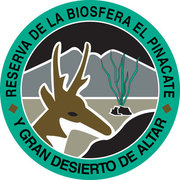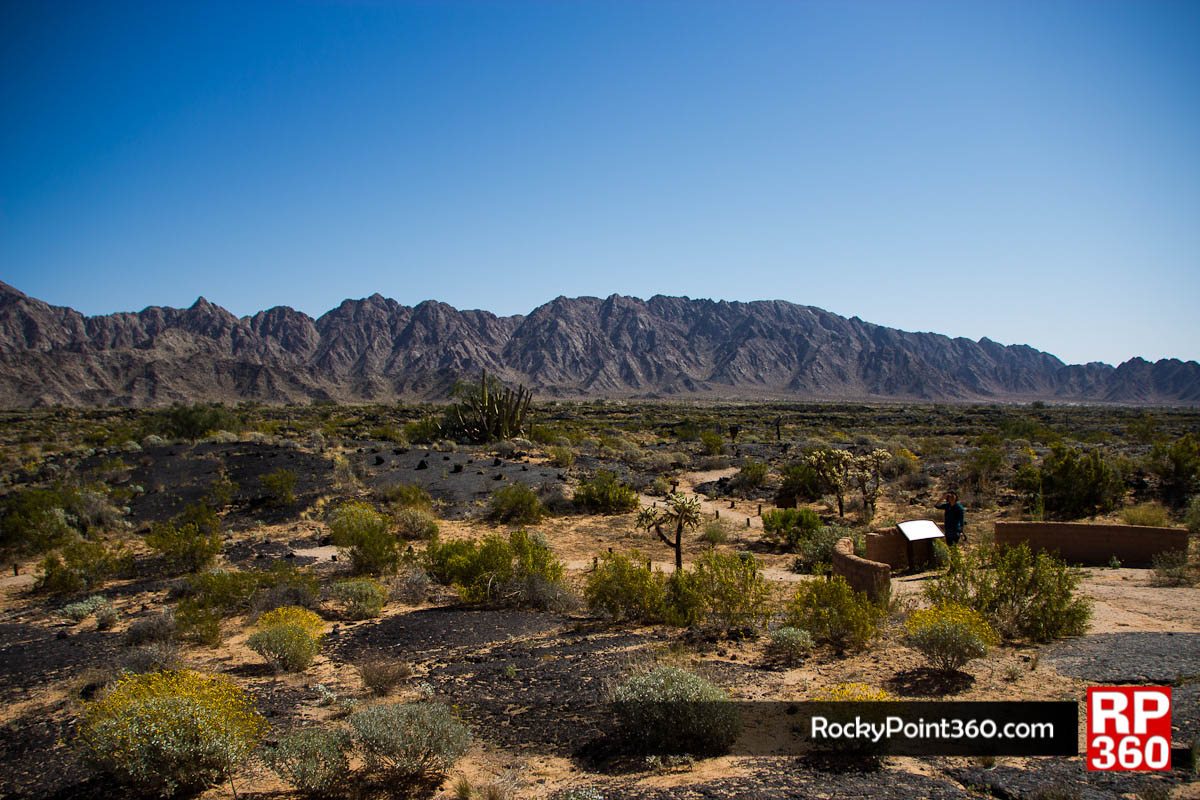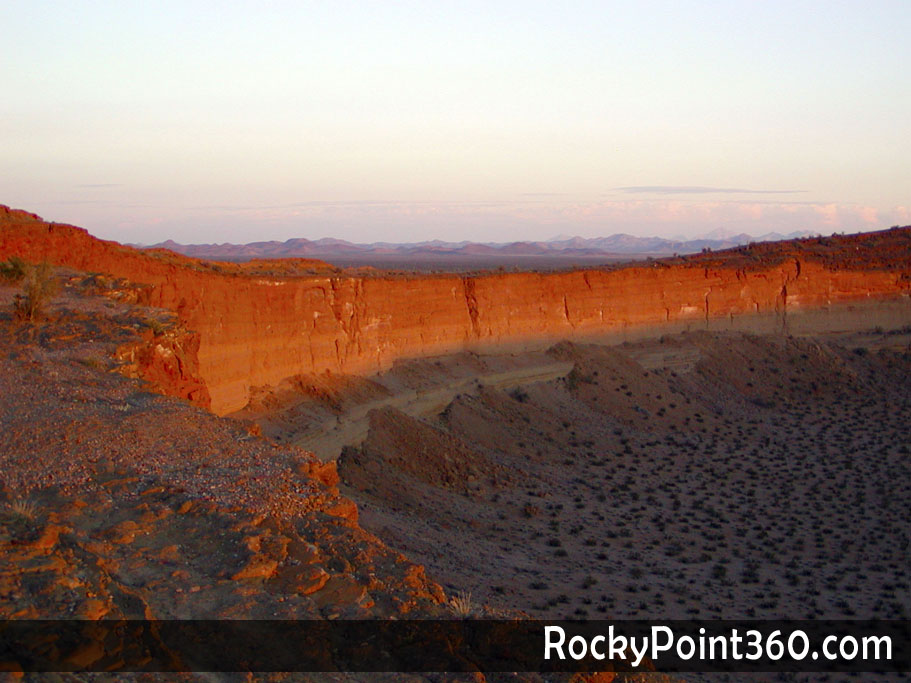Press Release
Pinacate Biosphere Reserve and Grand Desert of Altar named World Heritage Site by UNESCO
On Friday, June 21, 2013, at the World Heritage Convention in Phnom Penh and Siam Reap, in the kingdom of Cambodia, the Pinacate Biosphere Reserve and Grand Desert of Altar in Sonora, Mexico was named to UNESCO’s list of World Heritage sites. It is worth noting the Pinacate was the only entrant from Latin America under consideration, with other entrants from India, Italy, Kenya, Namibia, the Phillippines, Tajikistan, Vietnam, Canada, Guinea Bissau, South Africa, and Russia.
It was not an easy process, remarks Engineer Federico Godínez Leal, Director of the Pinacate Reserve, “…it was a tremendous collaborative effort and a four-year process dedicated to preparing the 240 page document for registry, (along with) innumerable photographs, graphics and informative tables to fulfill all requirements. These were submitted to UNESCO in February of 2012.” Nevertheless, the proposal to seek this status arose more than 10 years ago through the National Commission of Natural Protected Areas (CONANP).
The Pinacate participated under the following criteria in justifying its registry as a World Heritage Site:
* Criteria VII: Containing superlative natural phenomena or areas of exceptional natural beauty and aesthetic importance;
* Criteria VIII: An outstanding example representing major stages of earth’s history, including the record of life, significant on-going geological processes in the development of landforms, or significant geomorphic or physiographic features;
* Criteria X: Containing the most important and significant natural habitats for in-situ conservation of biological diversity, including those containing threatened species of outstanding universal value from the point of view of science or conservation.
The United Nations Educational, Scientific, and Cultural Organization (UNESCO) seeks to promote the identification, protection, and conservation of sites around the world considered to have an outstanding value for humanity. The mission of the 1972 World Heritage Convention, represented in an international treaty, is to encourage countries around the world to protect their heritage, name sites within their borders to be part of the World Heritage List, encourage governments to establish management plans to promote conservation within these sites, help said governments protect World Heritage Sites through technical assistance and professional training, provide emergency assistance in cases of imminent danger, provide governments with activities to raise awareness among the population as to the World Heritage Sites and conservation of these, encourage participation of the local community in conserving the site, and encouring international cooperation in the conservation of the site, among others.
The most important advantage of being named a World Heritage Site is that of belonging to an international community that appreciates and is interested in sites with universal value, representing a conjunction of exceptional examples. The prestige of being a country wherein a World Heritage Site is located serves as a catalyst to increase awareness in the preservation of this heritage. Another advantage is that of gaining access to an annual 1 million dollar fund to help participating countries identify, preserve, and promote World Heritage Sites. These sites also benefit from the drawing up and application of plans with a global scope that propose appropriate preservation measures, as well as monitoring efforts. As additional support, the local team that manages the site may also receive expert technical training. Registry within the list of World Heritage Sites brings along with it greater public awareness of the area and its value, which in turn increases tourism. When these activities are planned correctly, and organized in line with the principles of sustainable tourism, they can represent an important source of income for the site as well as the local economy.
We have seen in recent years how the name of the Pinacate has found a place in the minds of those seeking pristine landscapes, unique beauty, and rich biodiversity. There are countless reports, articles, stories, and even entertainment programs that have increasingly promoted the site. Nevertheless, there is still much to be done and now being part of this very important list is yet another tool toward reaching this goal.
Congratulations to the National Commission of Natural Protected Areas, to SEMARNAT, and to the Government of Mexico for having bet on conservation and having the vision needed to achieve this type of goal!
Reserva de la Biosfera El Pinacate y Gran Desierto de Altar Patrimonio Natural de la Humanidad
Comunicado Hoy Viernes 21 de Junio:
Este viernes 21 de Junio del 2013 en la Convención de Patrimonio de la Humanidad en Phnom Penh y Siem Reap, en el reino de Camboya, La Reserva de la Biosfera El Pinacate y Gran Desierto de Altar, ubicada en Sonora, México fue inscrita como bien natural dentro de La Lista de Patrimonio de la humanidad de la UNESCO. Cabe mencionar que fue el único bien de Iberoamérica y que concursó contra países como India, Italia, Kenia, Nambia, Filipinas, Tajikistan, Viet Nam, Canadá, Guinea Bissau, África del Sur y Rusia.
 El proceso no fue fácil nos comenta el director de dicha Reserva, el Ingeniero Federico Godínez Leal – “fue en un gran esfuerzo de colaboración y un proceso que duraría más de cuatro años dedicados a preparar un documento para la inscripción, con 240 páginas, cuantiosas fotografías, gráficas y tablas informativas, que contara con todos los requisitos, mismo que fue sometido a la UNESCO en febrero del 2012”. – Sin embargo la propuesta surge hace mas de 10 años por medio de la CONANP (Comisión Nacional de Áreas Naturales Protegidas).
El proceso no fue fácil nos comenta el director de dicha Reserva, el Ingeniero Federico Godínez Leal – “fue en un gran esfuerzo de colaboración y un proceso que duraría más de cuatro años dedicados a preparar un documento para la inscripción, con 240 páginas, cuantiosas fotografías, gráficas y tablas informativas, que contara con todos los requisitos, mismo que fue sometido a la UNESCO en febrero del 2012”. – Sin embargo la propuesta surge hace mas de 10 años por medio de la CONANP (Comisión Nacional de Áreas Naturales Protegidas).
El Pinacate participó con los siguientes criterios como justificación de la inscripción. Criterio VII: Contiene fenómenos naturales superlativos o áreas de excepcional belleza natural e importancia estética. Criterio VIII: Ejemplos eminentemente representativos de las grandes etapas de la historia de la tierra, incluyendo el registro de la vida, los cuales son importantes en procesos geológicos en curso, el desarrollo de las formas terrestres o geomorfológicos importantes o las características fisiográficas. Criterio X: Contiene los hábitats naturales más importantes y significativos para la conservación in situ de la diversidad biológica, incluyendo aquellos que contienen especies amenazadas de destacado valor universal excepcional desde el punto de vista estético o científico.
La Organización de Educación Científica y Cultural de las Naciones Unidas (UNESCO) busca fomentar la identificación, protección y conservación de sitios alrededor del mundo, los cuales se consideren de valor sobresaliente a la humanidad. Este tratado internacional es lo que representa la Convención, adoptada en 1972. La misión es Promover a los diferentes países a que protejan su patrimonio, que se nominen sitios dentro de su territorio nacional para que estén dentro de la lista de patrimonio de la humanidad, promover que los gobiernos establezcan plan de manejo que difunda el estado de conservación de su sitio, ayudar a dichos gobiernos a salvaguardar las propiedades de patrimonio de la humanidad por medio de asistencia técnica y entrenamiento profesional, proveer asistencia de emergencia en caso de peligro eminente, proveer a los gobiernos de actividades para concientizar a la población sobre el sitio de patrimonio de la humanidad y su conservación, promover la participación de la población local en la misma conservación de su sitio, promover la cooperación internacional para la conservación del sitio, entre otras.
La ventaja mas importante es de pertenecer a una comunidad internacional que aprecia y se interesa por bienes de valor universal que representan un conjunto de ejemplos excepcionales. El prestigio que supone ser un Estado Parte y poseer un bien que figura en la Lista del Patrimonio Mundial sirve de catalizador para incrementar la sensibilización a favor de la preservación del patrimonio. Otra ventaja es poder acceder a un fondo que se genera anualmente de un millón de dólares que esta disponible para ayudar a los estados partes a identificar, preservar y promover los bienes del patrimonio mundial. También se benefician de la elaboración y aplicación de un plan de gestión global que propone medidas adecuadas de preservación así como mecanismos de vigilancia. Como apoyo adicional el equipo local que administra el sitio puede recibir formación técnica por parte de expertos. La inscripción de un bien en la Lista, trae aparejada una mayor sensibilización del público en favor del mismo y de sus valores, lo que a su vez incrementa las actividades turísticas. Cuando estas actividades están correctamente planificadas y se organizan de acuerdo con los principios de un turismo sostenible, pueden constituir una fuente importante de ingresos para el sitio y para la economía local.
Hemos visto en los últimos años como el nombre de El Pinacate se ha ido posicionado en las mentes de quienes buscan paisajes prístinos, de belleza única, y rica biodiversidad. Un sin fin de reportajes, artículos, historias y hasta programas de entretenimiento han promovido este sitio cada vez con mayor frecuencia. Sin embargo queda mucho por hacer, y estar dentro de una lista tan importante es una herramienta mas para ello. Felicidades a la Comisión Nacional de Áreas Naturales Protegidas, a SEMARNAT y al Gobierno de México por apostarle a la conservación y tener la visión que se necesita para lograr este tipo de metas.



